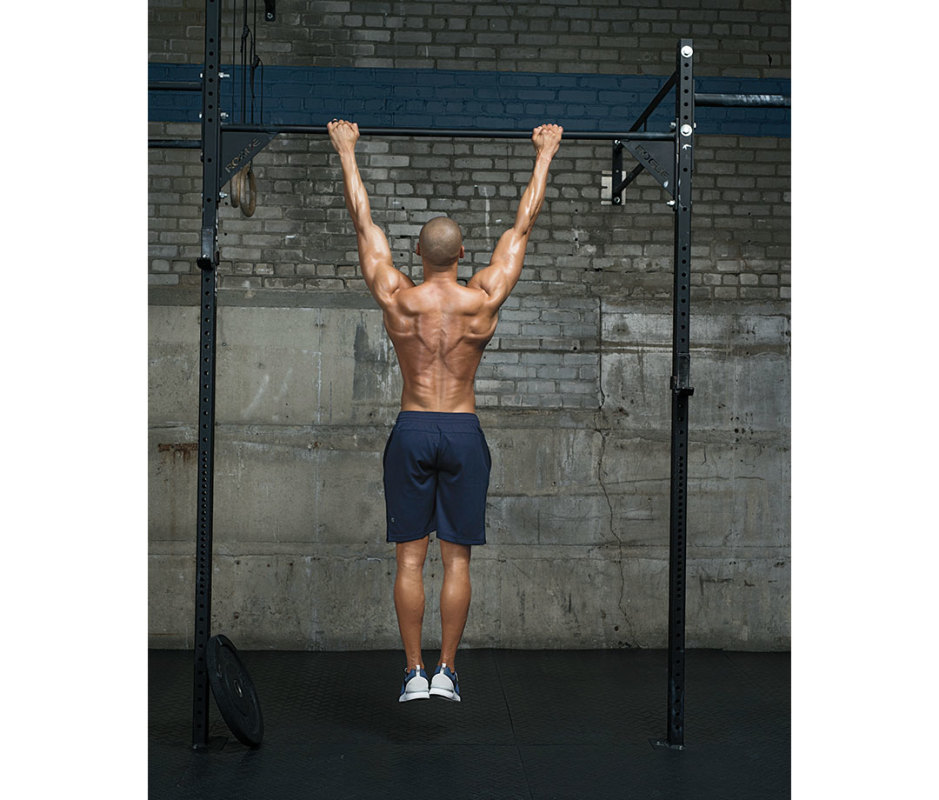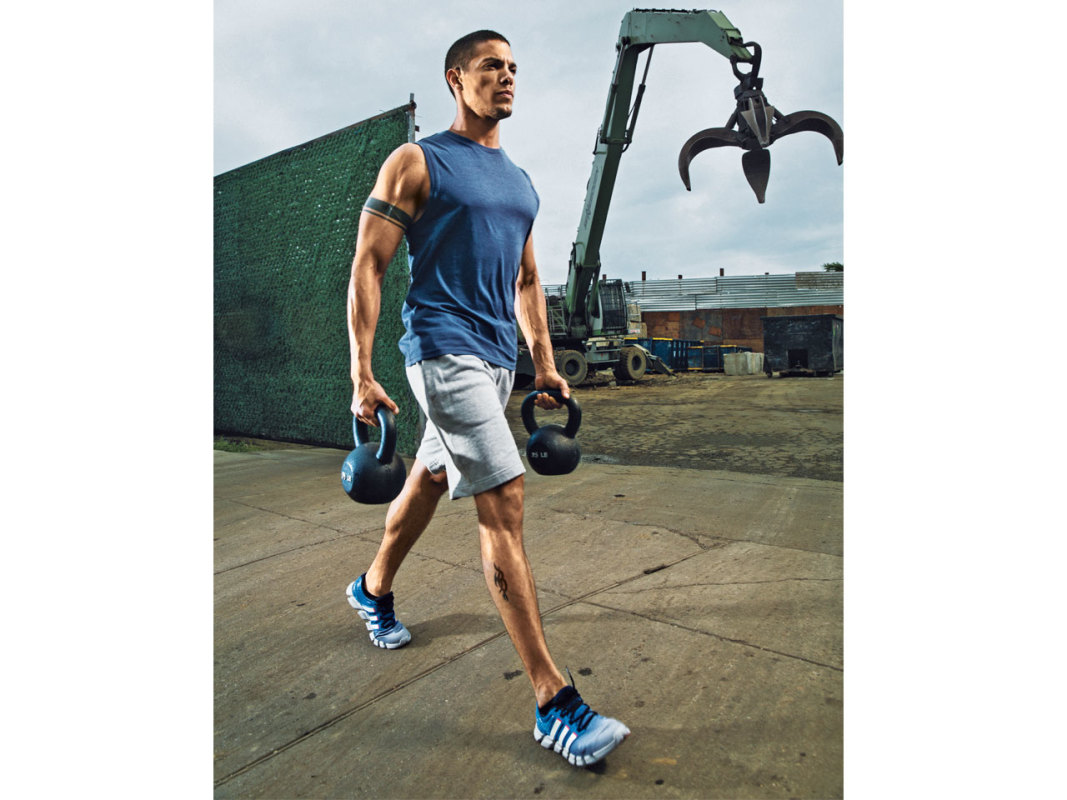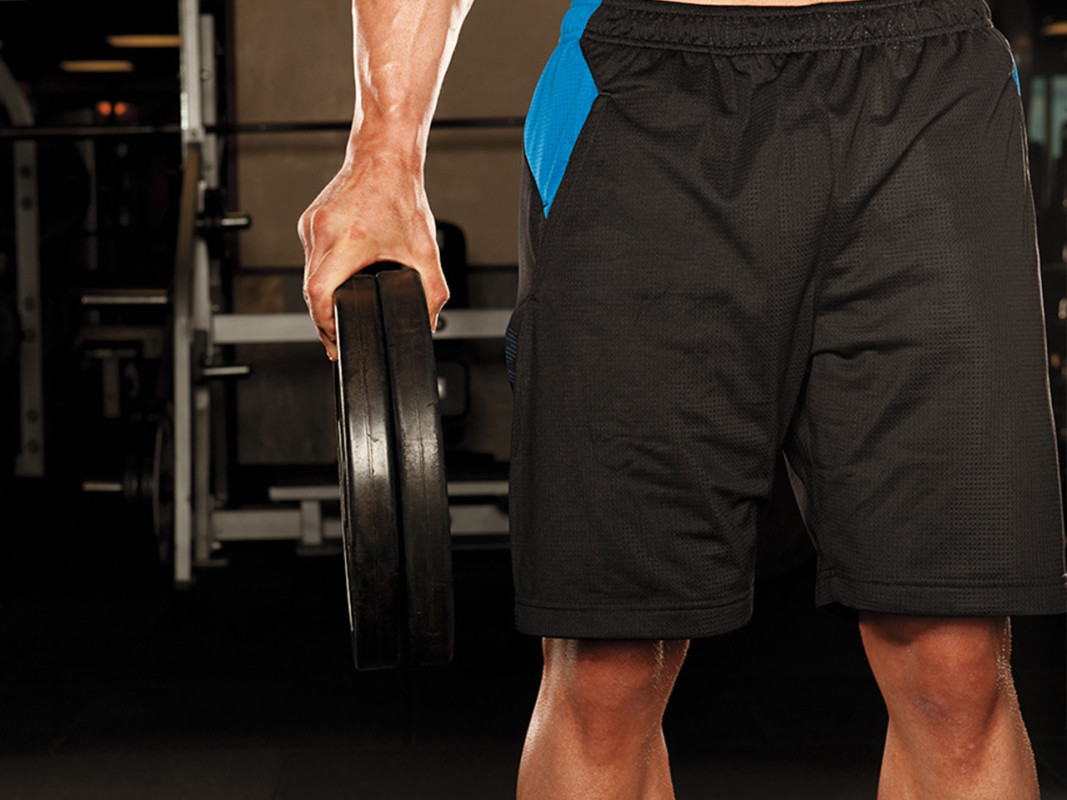A strong grip can do more than give a firm handshake. Building your grip strength is imperative for lifting more weight when working out–especially for powerful moves like pull-ups and deadlifts. Building a stronger grip translates to building muscle.
However, many people working in the gym can sabotage strength-building by either compensating for weaknesses (like overusing grips and lifting straps) or avoiding them altogether by not adequately challenging the muscles.
Here’s more about why and how to build grip strength and our favorite tips for including grip strength-building habits into your routine.
Courtesy Image
Types of Grip Strength
Here are three main types of grip strength to optimize:
Hold Grip Strength
This is the strength that allows you to hold tight to things for as long as necessary–like a barbell or a shopping bag.
Pinch Grip Strength
This is the strength that’s primarily used between your thumb and four-fingers when opening a bottle or holding a pencil.
Crush Grip Strength
This is the strength that allows you to generate power between your fingers and the palm of your hand when doing deadlifts or holding a phone.
What Affects Grip Strength?
Grip strength is affected by exposing (or not) the upper extremities to enough of the right kind of work consistently. For instance, not closing your hand tightly around objects you’re carrying or failing to use all of your fingers can cause weakness over time. Also, using grip aids to lift weights will prevent your body from working to its full potential. Think of it as trying to learn to swim but never taking off a flotation device. The goal should be to lift naturally with nothing attached to the hands.
Not understanding where grip strength comes from makes it harder to work the right muscles. Grip strength is actually drawn from the forearms–specifically the forearm flexors–and not the hands. Strengthening those muscles will have a direct impact on how tightly you can close your hand and how long you can maintain a strong hold. There are strategies that can be employed, so have no fear.
Benefits of Improving Grip Strength
Grip strength is an overlooked aspect of fitness, but it ties into every aspect of the bigger picture. Yes, leg strength and back stability are important, but grip strength is right there with them.
For starters, building a stronger grip can help you lift more for longer periods of time. Often, small muscles in the hands and fingers–such as the flexor digitorum profundis (FDP)–give out on holding the weight or pull-up bar before the major muscles that drive the movements do—holding on is paramount to lifting.
Increased grip strength will also improve performance in sports like rock climbing, golf, and tennis. And grip strength can help reduce hand and wrist injuries while improving fine motor function. Plus, researchers at the University of Vienna in Austria suggest that grip strength is a fairly accurate measure of overall health as we age.
Related: The 5 Best Barbells From Beginner to Olympic
The Best Exercises for Improving Grip Strength
Keep in mind that muscles respond best to higher reps at lower weight. That means if you’re trying to train your grip with heavy deadlifts at low reps primarily, you’re only going to get so far in your progress.
Doing muscular endurance work that involves the grip may be the missing link for plenty of gains–and plenty of development in the forearms to boot.
1. Dead Hang

Dylan Coulter
It’s one thing to be able to knock out a set of pull-ups, but it’s quite another to possess the grip strength to stay in a full weight-bearing hang position for an extended period of time. Dead hangs are one of the simplest and most effective exercises to improve grip strength, and as long as your shoulders are healthy, it’s one we highly recommended.
How to do it:
- Hang from a pull-up bar, body straight, elbows locked out.
- Squeeze the bar hard with a full grip, focusing on the ring and pinkie fingers, which tend to be weaker.
- There should be no space between palms and the bar, so no hanging by your fingers.
- Keep your tailbone tucked under, with spine aligned from ears to ankles.
- Start with hanging for a 10-second count, then add time in 10-second increments until you’ve built up a hang time of around 60 seconds.
If you’re really up for a challenge, try building up to one-handed dead hangs for sets of 15-20 seconds each.
Pro tip: Ditch the straps.
As mentioned earlier, using grip aids like wrist straps can actually encourage your body to rely on them and hinder strength-building. If you have issues with dead hangs initially, start by leaving the straps in your gym bag and lifting slightly less weight so that you can actually hold without help.
2. Loaded Carries

Though there are several examples of loaded carries, like fireman carries, atlas stone carries, and waiter walks, start with the farmer’s walk. These emphasize grip strength in the classic form of holding on to two heavy weights at arms’ length, and traveling with them for a certain distance.
A growing number of gyms are beginning to carry distinct farmer’s carry handles to make loading a piece of cake and the movement more user-friendly. But if your gym doesn’t yet have these, kettlebells or dumbbells would be go-to alternatives.
How to do it:
- Hold a heavy kettlebell or dumbbell in each hand.
- Squeeze shoulder blades and pull them down to create a “proud chest.”
- Staring ahead and squeezing triceps, walk for about 60 seconds, reset, and repeat twice.
If you’re up for it, an effective method to up the difficulty is to use a trap bar. This way, the weight loaded can be far greater (and even rival your deadlift numbers), and you have neutral grips to carry the weight with, that won’t get in the way of your legs as you move.
Pro tip: Increase your carry time.
This exercise doesn’t have to stay in the gym. Try carrying the groceries this way to your car and from your car to your kitchen. And increase your one-minute walk by 15-second increments as your grip gets stronger.
3. Dumbbell Head Hold/Pinch Plates

This exercise zeroes in on forearm engagement. Here, you’re holding weight with only your fingers. It’s not a push or pull move, but it is a good way to stress the right muscles to not only strengthen your grip but establish the muscle-memory to generate power with all of your fingers.
How to do it:
- In each hand, grasp the rounded-edges of two weight plates between your fingers and thumb, keeping your arms straight by your sides.
- Keep your arms straight at your sides.
- Do 3 sets of 10 to 20 seconds.
If you’d rather work with dumbbells, hold the head of a 5 to 15-pound dumbbell with fingertips. Keep your arms at your sides and avoid using palms to hold the weight.
Pro tip: Two plates in each hand is better than one.
If you can only manage one plate in each hand at first, that’s fine. But as your grip gets stronger, add another plate to widen your grip and challenge your fingers.
Related: 9 Simple Moves That Will Help Fix Your Bad Posture
More Ways to Increase Your Grip Strength
Work on Grip Every Week
Grip strength isn’t something that’s built to last on its own. You have to maintain it. Every time you’re working out, remember that pulling or lifting anything is an opportunity to train your grip. So incorporate those types of activities into every routine.
Factors like muscle imbalances, dominance issues, and rear-side weakness beg for more cumulative volume of pull exercises to establish proper strength and developmental balance.
Challenge Your Entire Arm
By incorporating exercises like deadlifts, pull-ups, and bodyweight rows, you can develop your entire arm, not just your grip. Work on adding weight to rack deadlifts, a variation that emphasizes the top portion of the lift and allows for more weight on the bar hence a larger grip challenge.
For pull-ups and bodyweight rows, constantly challenge yourself by switching grips every few reps during a set. By releasing and then grasping the bar, you’ll challenge your forearms to adjust and adapt to a variety of positions. Also, don’t neglect exercises like walking lunges while holding dumbbells as they present a great opportunity for building a strong grip.
Avoid Mixed Grip Deadlifts
Using a mixed grip for your heaviest pulls is understandable. But using it for every single set does your grip no good. Not only are you creating potential muscle imbalances by constantly turning one arm internally and one externally, but you’re also torqueing the barbell without truly letting your holding strength do the job. Use a double overhand grip when deadlifting for as long as you can before you absolutely need to make the switch to lift a heavy load.
Incorporate Grip Builders
Towels and a variety of other grip strengthening tools can be added to your daily routine. While adding weight to the bar is usually enough progression on your grip, these tools can help to amplify your results by increasing the strength demand.
Try wrapping a towel around a bar or handle on any exercise to increase the thickness of the hand hold. Squeeze the towel while performing the exercise, but just be aware that you will likely need less weight than usual do to the added challenge.
Squeeze the Bar—Hard
Actively squeezing the bar with your hands during a set leads to greater grip activation and therefore more gains in grip strength. Avoid letting the bar slide towards your fingers during a set. Instead, keep it locked firmly in the palm of your hand and wrap your thumb around the bar to hold it in place.
Be mindful about emphasizing your squeeze on other things throughout the day as well, like door handles and water bottles. By engaging your grip more during exercise and other daily activities, you’ll likely find that your strength levels will increase consistently.
Do More Pulling Than Pushing
Grip strength often stays weak simply because the pulling muscles aren’t adequately trained. Which, for 9 out of 10 guys, may mean you don’t want to do a 1:1 ratio of pull and push exercises. For most of us, muscle imbalances, dominance issues, and rear-side weakness beg for more cumulative volume of pull exercises to establish proper strength and developmental balance. Use staple pull exercises like chin-ups, deadlifts, pull-downs, and barbell and dumbbell rows often to train the back and strengthen the grip.
